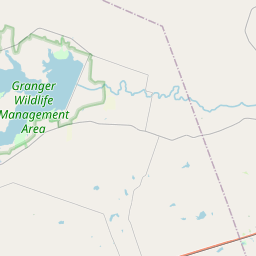St. Paul Luthern Church, School and Cemetery







August Polnick and his family moved from Lee County to Thorndale in 1881. The family were the first recorded Germans and also the first Lutherans in this area. Their former pastor, G. Birkmann, made ministerial visits to Thorndale over the next five years. A congregation gradually formed with Thorndale residents and Lutherans in the nearby Hochkirche (Noack) community. By 1890 the combined parish recorded 69 communicants, with services held exclusively in German.
Later in 1890, Karl Michalk donated ten acres of land for a church, school, and cemetery. The church building was dedicated in 1891. The first burial in the cemetery was that of the infant son of Ida Schultz in 1891. A. W. Kramer was called as St. Paul's first full-time pastor in November 1893. He arrived in March 1894 and also assumed the role of teacher for the school.
As the economy rose in Thorndale, Lutherans continued to arrive. By 1899 St. Paul's had 208 members and in 1900 the church congregation moved into a new building. The first full-time schoolteacher, J. Jaeckel, was called in 1900 to improve the school and the facilities.
Church membership reached 654 by 1911; the parish boasted 830 members by 1939. A tornado damaged the church building beyond repair in July 1940, and a new one was erected later that year. Sunday School began in 1948. Services were held in both English and German beginning by World War l. By 1952, there was one German service each year. Women became voting members of the congregation in the 1950s. Always involved in community development, both church and school remained active at the close of the 20th century. (1999)
As one of the most visible programs of the Texas Historical Commission (THC), historical markers commemorate diverse topics in Texas history, including: the history and architecture of houses, commercial and public buildings, religious congregations, and military sites; events that changed the course of local and state history; and individuals who have made lasting contributions to the state, community organizations, and businesses.
The state of Texas was once an independent country known as the Republic of Texas. It gained independence from Mexico in 1836 and was a separate nation until it was annexed by the United States in 1845.
In 1825, the Mexican government issued land grants in the region, attracting a wave of American immigrants to the area. In 1834, the Mexican government designated Milam County as a separate municipality, and it was named after Benjamin Rush Milam, a prominent Texas revolutionary. After the Texas Revolution in 1836, the region experienced continuous growth and development.
During the mid-19th century, agriculture became the primary industry in Milam County, with cotton being the dominant crop. Many plantations were established, relying on slave labor until the abolition of slavery in 1865. The county also saw the establishment of several small towns, including Cameron, Rockdale, and Buckholts, which served as centers of trade and commerce.
In the late 19th and early 20th centuries, the arrival of the railroad played a significant role in the county's development. The expansion of rail lines allowed for easier transportation of goods and people, boosting the local economy. The county experienced periods of prosperity and setbacks, including the Great Depression, but managed to rebound and adapt to changing economic conditions.
Today, Milam County remains an agricultural hub, known for its production of cotton, corn, and livestock. It is also home to scenic landscapes, historical landmarks, and a vibrant community that values its history and heritage. The county continues to evolve, embracing new opportunities while preserving its cultural roots.
Milam County Timeline
This timeline provides a condensed summary of the historical journey of Milam County, Texas.
- 1824 - Milam County is part of the Mexican state of Coahuila y Tejas
- 1837 - The Republic of Texas establishes Milam County as a separate entity
- 1846 - Milam County is officially part of the state of Texas after the Texas Annexation
- 1860s - Milam County experiences a surge in population and economic growth due to the railroad expansion
- 1874 - Cameron is selected as the county seat of Milam County
- 1940s-1950s - Milam County becomes an important hub for oil and gas production
- 1960s-1970s - Milam County faces economic decline due to the decrease in oil and gas production
- 1990s - Milam County experiences some economic revitalization through tourism and the establishment of new industries